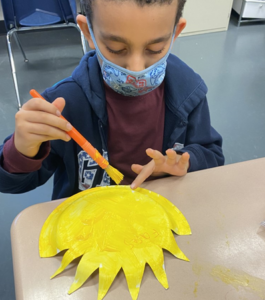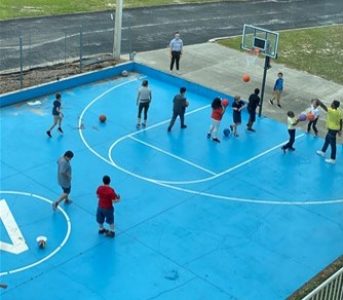Applied Behavior Analysis (ABA)
FACE specializes in helping children with autism, pervasive development disorder and other learning and behavior concerns with specialized programs using Applied Behavior Analysis (ABA).
What is ABA?
ABA is the scientific approach to modifying behavior, improving social interaction and facilitating learning. ABA is based on the concept that behavior is acquired through interactions with the environment and that changing the events in the environment can positively shape or influence a behavior.
Many children naturally learn from their environment – i.e., without intervention – but children who have learning, developmental or behavior concerns learn less from their environment than their peers might. They often need a structured environment where they have opportunities to acquire the same fundamental skills that other children may pick up naturally. ABA sets up this type of environment for them – in essence, teaching children how to learn.
ABA is used to develop basic skills like listening and imitating as well as more complex skills such as reading and having conversations. ABA also decreases behaviors that interfere with learning.
Who can benefit from ABA?
ABA programs have successfully worked for a variety of learners and ages, with and without disabilities, and in a multitude of settings. By the early 1960s, behavior analysts were working with young children with autism, behavior and learning concerns, and related disorders.
How does ABA work?
ABA therapy at FACE is individualized for each child, based on their approved Individualized Education Program (IEP). Each program element is customized to the child’s specific skills, needs, interests, preferences, goals and family’s desires. That is why an ABA program for one child will look different than a program for another. The rates of change and acquisition will vary from one child to another, too, as will the overall rate of progress.
Complex skills are often broken down into small steps. Dividing each skill into a series of smaller steps allows the child to learn a skill in stages. The individual steps are then individually taught using prompts, which are gradually eliminated as the steps are mastered. Every time the child achieves the desired result, he or she receives positive reinforcement that keeps him or her motivated to continually improve. Upon mastery, the child can then integrate the skill into his or her everyday life. During this process, behavior analysts at FACE systematically track and evaluate progress throughout the entire process.
Another core element of ABA therapy is reducing and replacing problem behaviors, such as self-injury or aggression, with more appropriate behavior. Behavior analysts work with parents and guardians to identify problem behaviors and why they are occurring. Once the motive is determined, the behavior analyst will develop a plan to teach new skills, such as communication, to replace the inappropriate behavior.
Why use ABA therapy?
ABA therapy is the scientific approach to improving human behavior and has been shown to produce many important and socially significant changes. ABA can positively affect communication, academic, social and adaptive skills within numerous populations, ages and skill sets.
ABA therapy procedures have been thoroughly researched and found to be effective, and they are strongly supported by the scientific community. Thousands of published and peer-reviewed studies have demonstrated the value of this therapy in treating people with Autism Spectrum Disorders, learning and behavior concerns, and related disorders. A number of the children who participated in early intensive ABA acquired skills that allowed them, within a few years of the therapy, to participate in mainstream classrooms with little or no ongoing help. Moreover, many children who receive ABA improve their quality of life – and that of their families – learn to function in the community, hold jobs as adults, and develop lasting personal relationships. ABA is recommended and supported by the U.S. Surgeon General and the American Academy of Pediatrics, among other reputable organizations.
In the fields of autism and other disabilities, emphasis has been placed on using only evidence-based practices – those whose effectiveness have been proven using scientific methods – in delivering services. ABA is a prime example of this shift, because its procedures have been thoroughly studied and verified. Also of significance is that the therapy’s practical impact on a single individual can also be studied. This is important, as our objective at FACE is to help every child, regardless of ability, meet his or her individual goals and achieve a productive, high-quality life.
Who can provide and supervise ABA therapy?
In the same way that a medical treatment program should be directed by a qualified medical professional, ABA programs should be designed and supervised by qualified behavior analysts. At FACE, lead analysts have the right training and experience, and teachers are trained on best practices for working with students with autism and related disabilities.
Information was compiled from autismspeaks.org, autism-behavior-strategies.com, piecesofthepuzzle.com, rsaffran.tripod.com, and brighttots.com.


